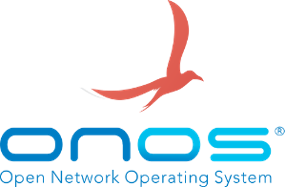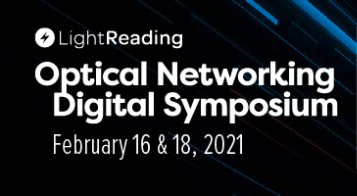The Open Optical Networking Blogs, Introduction

In this blog series, Fujitsu’s Francois Moore explores the key issues and current developments in open optical networking. The topics addressed include Adding Alien Wavelengths, Controlling Multi-Vendor Optical Networks, Opening the ROADM network, Disaggregating the Transponder, and Planning with Multi-Vendor Optical Design Tools.
The last five years have seen the emergence of various initiatives to transform the optical transport network into an open architecture, in parallel with the advancement of open architectures in the data center and the 5G Radio Access Network (OpenRAN).
The goals of greater openness are to eliminate vendor lock-in (which will enable multi-vendor best-of-breed networks thanks to more product options), improve supply chain resilience via second-sourcing options, and more. As software gets smarter, more capable, and grows in scope – think SDN, network orchestration, and automation – open interfaces grow in relevance and importance. Integration efforts are greatly simplified through the use of well-defined standard protocols and open source code versus proprietary APIs.“
2021 is a really pivotal year for disaggregation and open packet-optical networks. After many years, the industry is coming together around some open and disaggregated models that are built for the telecom market.
Sterling Perrin, Principal Analyst, Heavy Reading

The goals are the same across networking domains but the path is different. For example, in the 5G RAN the radio is disaggregated from the baseband unit with CPRI as the standard protocol between them. BBU functions have been further decomposed into the CU and DU and are being virtualized. Optical networks have different characteristics and a unique evolution path, so the model and architecture for openness will differ. The goal remains the same.
In this blog series we will map out the various open optical networking initiatives and their respective differences, and compare their individual levels of openness. The best path forward for service providers will depend on the network currently in place, and the desired benefits.
INDUSTRY INITIATIVES FOR OPEN OPTICAL NETWORKING
The vision is compelling: the industry agrees on standard protocols and reference architectures, leading to modular building blocks for both optical hardware and open source SDN software, thus attracting new vendors and building up a robust open ecosystem. Here are some of the major initiatives underway:
Open ROADM: Defines interoperability specifications for ROADMs, transponders and pluggable optics, covering both optical interoperability as well as YANG data models.
TELECOM INFRA PROJECT: works on various sub-projects in the TIP Open Optical & Packet Transport (OOPT) group address for different parts of the network:
GNPy is an open-source library for building route planning and optimization tools for real-world multi-vendor optical networks
DOS (Disaggregated Optical Systems) focuses on defining and building open and disaggregated optical hardware including transponders.
CANDI (Converged Architectures for Network Disaggregation & Integration) focuses on defining and proving service provider use cases in open converged packet/optical networks.
OOPT-NOS (Network Operating Systems) focuses on a reference open source Network Operating System (NOS) that supports OOPT disaggregated hardware platforms.
Open and Disaggregated Transport Network: A service provider-led initiative to build data center interconnects using disaggregated optical equipment, open and common standards, and open source software. A project of the ONF (Open Networking Foundation).
OpenConfig: An informal service provider working group adopting software-defined networking principles such as declarative configuration and model-driven management and operations.
OpenDaylight: Open source SDN controller for customizing and automating networks, with a Model-Driven Service Abstraction Layer leveraging YANG models to map applications to network hardware.
Open Network Automation Platform: is for orchestration, management, and automation of network and edge computing services, delivering real-time, policy-driven orchestration and automation of physical and virtual network functions.
Open Network Operating System: An open source SDN controller that is extensible, modular and distributed, with northbound and southbound interfaces. It has applications in the central office, data center, optical transport networks, and more. A project of the ONF (Open Networking Foundation).
As you can see these initiatives sometimes overlap, though with differences in their approach and specific areas of focus. Some are telecom industry associations or projects that have extended into the optical domain, while others started from the optical networking industry. Perhaps more importantly varying levels of maturity apply, from model definition to commercially available implementations.
Every open optical networking initiative opens a part or layer of the network and none are simultaneously opening all of them. Is your goal to add a second transponder vendor, add a new OLS vendor, or build an SDN controller that works across transport, FTTH, and 5G domains? There are varying levels of openness that are achievable or required depending on your goal. Large service providers with in-house system integration capabilities may consider more extensive implementations of open architectures to realize their full benefits. Smaller service providers may choose selective implementations for specific purposes.
More to Come
The constellation of open initiatives can seem confusing and even contradictory. Each of them has various shades of openness. The intent of the series is to contrast them and help you understand what they are, their strengths as well as their limitations. Ultimately the single most important attribute of any disruptive initiative is to provide value to customers.
This is the first part in our blog series on the topic of Open Optical Networking; future blogs will address specific reference network components as well as its underlying technology:
- Adding Alien Wavelengths
- Controlling Multi-Vendor Optical Networks
- Opening the ROADM network
- Disaggregating the Transponder
- Planning with Multi-Vendor Optical Design Tools
Fujitsu is an active and leading participant in the emerging open optical networking ecosystem. For example, Fujitsu was an early founder of Open ROADM and is currently actively participating in several TIP and ONF initiatives. With our 1FINITY™ and Virtuora® platforms, we have integrated and deployed numerous open networks worldwide. If you are considering which open architecture is best suited to your needs, please fill out this form to be contacted by a Fujitsu Representative:
Attend the Optical Networking Digital Symposium hosted by Light Reading: Join us for Session Two - Open and Disaggregated Optical Networks at 11:45AM ET on Feb 18, 2021.





